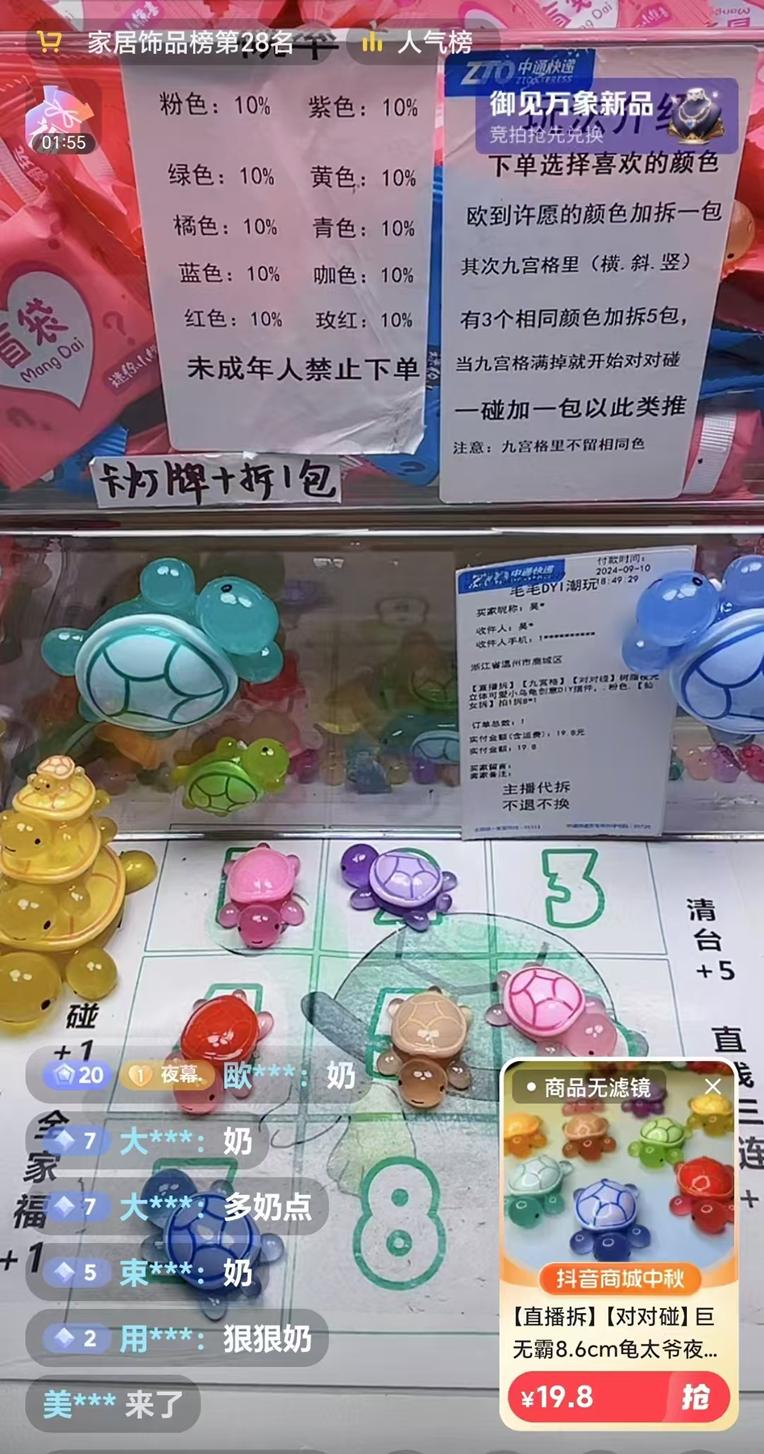"Informed AI News" is an publications aggregation platform, ensuring you only gain the most valuable information, to eliminate information asymmetry and break through the limits of information cocoons. Find out more >>
The Rise of 'Pairing' in E-commerce: From Turtles to Everyday Items
- summary
- score

This summer, a simple resin turtle from Yiwu became a viral sensation, driven by Olympic champion Quan Hongchan. The novelty lay not in the turtle itself, but in a live-streaming game called "Turtle Pairing." Consumers bought mystery packs of turtles, and the host would open them on-screen. If a desired color or a pair was found, another pack was opened, adding suspense and luck to the purchase.
Initially, skeptics doubted the fad's longevity. The turtles were essentially useless trinkets, and the game's appeal would wane. Yet, the concept evolved. "Pairing" spread to other products—from household items to snacks—transforming mundane shopping into a game.
For some, like 33-year-old Su Ye, it was a midday distraction. He ordered twice, captivated by the live unfolding. The hosts' lively banter and the suspense of each pack kept viewers hooked.
As the turtles' hype faded, the game persisted. Now, everyday items were paired and sold with the same suspense. This shift blurred the lines between traditional e-commerce and entertainment.
The success of "Pairing" lies in its dual appeal: it sells products and offers a game-like experience. This fusion could redefine e-commerce, making shopping more engaging and interactive.
In essence, "Turtle Pairing" showed that e-commerce isn't just about selling; it's about creating experiences. This shift could be the future, blending shopping with entertainment seamlessly.
| Scores | Value | Explanation |
|---|---|---|
| Objectivity | 5 | Balanced reporting with comprehensive analysis. |
| Social Impact | 4 | Strong social discussion, influencing public opinion. |
| Credibility | 4 | High credibility with sufficient evidence. |
| Potential | 5 | High potential to trigger significant changes. |
| Practicality | 4 | Highly practical, directly applicable. |
| Entertainment Value | 5 | Very entertaining, attracting a wide audience. |